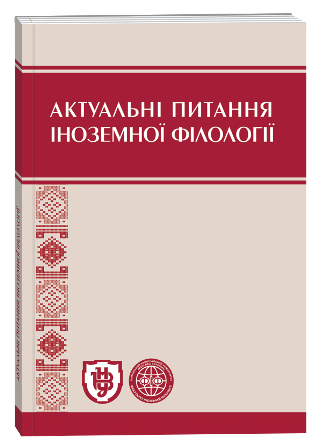PRAGMATIC PECULIARITIES OF KNOWLEDGE REPRESENTATION IN CONTEMPORARY ENGLISH LECTURE DISCOURSE
Keywords:
communicative and pragmatic means, lecture discourse, discourse marker, information, attentionAbstract
The article covers the main features of pragmatic peculiarities of knowledge representation in contemporary English lecture discourse. Communicative and pragmatic means were distinguished and characterized in a contemporary English lecture discourse, with a help of which the influence of the author-lecturer on the student-reader is made. The reference has been made to the lecture discourse ability to attract, retain and manipulate the reader’s attention. Linguistic units that logically combine one sentence with another and also one part of the lecture material with the next one are defined. The use of different features of discourse markers at various stages of the lecture is determined. The way of knowledge representation is analyzed for maximum perception effect of information provided in the written lecture fixations. A quantitative frequency analysis of the use of means of the student-reader’s attention attraction is done, according to which the most frequent are means of opposition and discourse organization that promote the release of primary and secondary information, the clarification of lecture material, its successful explanation.
References
Добрынин Н. Ф. Внимание и его воспитание / Н. Ф. Добрынин. – М. : Правда, 1951. – С. 3–31.
Ільченко О. М. Атрактори уваги сучасного англо-американського наукового дискурсу / О. М. Ільченко // Вісн. Житомир. держ. пед. ун-ту. – 2003. – № 11. – С. 171–174.
Broadbent D. E. Perception and communication. – London : Pergamon Press, 1958. – 338 p.








